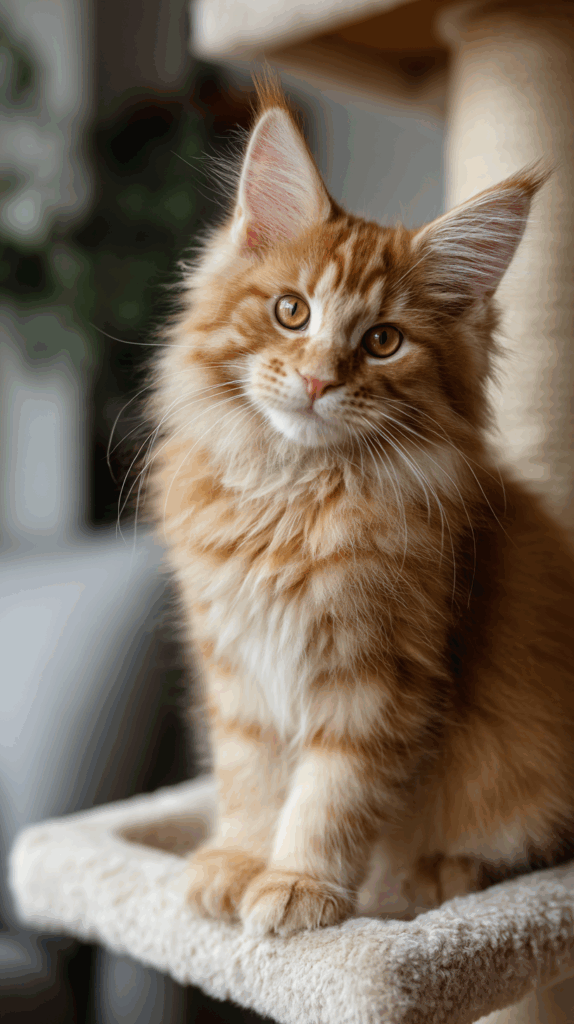
Orange Maine Coon Kittens: Genetics, History, and Care
Looking for a Orange Maine Coon kitten of your own?
We raise healthy, well-socialized Maine Coon kittens with a focus on health and temperament. Click here to see available kittens and join the waitlist for your perfect companion.
Maine Coons are one of the most recognized breeds in the world, and their wide variety of coat colors adds to their appeal. Among these, the orange Maine Coon kitten — often officially classified as red in cat registries — is one of the most striking and sought after. The bold coloring combined with the size and personality of the Maine Coon creates a cat that is both memorable and highly valued. See the Complete Guide to Maine Coon Cat Colors Here.
What Makes a Orange Maine Coon Kitten?
The orange (or red) coat color in cats is caused by the presence of pheomelanin, the pigment responsible for red and yellow hues. This is controlled by the O gene (orange) located on the X chromosome. The orange gene converts what would normally be black pigment into red. Because it is sex-linked, the inheritance of the orange coat is unique and produces differences between male and female Maine Coons.
Scientists have finally tracked down the gene that make a cat orange. A male cat only needs one copy of the orange gene, inherited from his mother, to appear orange. A female must inherit the orange gene from both parents to be fully orange. If a female receives one copy of the orange gene and one copy of the non-orange gene, she will be a tortoiseshell, displaying both black and red patches. This sex-linked inheritance explains why orange Maine Coon kittens are more frequently male.
Orange vs. Red: Understanding the Terms
Most breeders and registries refer to this color as red rather than orange. However, in everyday conversation, orange is the more familiar term and accurately describes the appearance of the coat. Both terms describe the same genetic outcome: a coat dominated by pheomelanin. In Maine Coons, the red gene almost always expresses itself with a visible tabby pattern, since solid red without striping is extremely rare.
Types of Orange Maine Coon Kittens
Orange Maine Coons are not all the same. Several variations exist based on shade and pattern:
- Classic Tabby Red Maine Coon: Broad swirls and circular markings, often with a bullseye pattern on the sides.
- Mackerel Tabby Red Maine Coon: Narrow, vertical stripes running down the sides of the body.
- Spotted Tabby Red Maine Coon: Less common, with broken markings instead of continuous stripes.
- Solid Red Maine Coon: Extremely rare, as most orange cats reveal some form of tabby striping.
- Red Smoke Maine Coon: The red coat tipped over a white undercoat, created by the inhibitor gene.
- Red and White Bi-color Maine Coon: Orange coat combined with patches of white on the chest, paws, or face.
These varieties add to the richness of the orange Maine Coon population and give breeders and owners a wide range of appearances to choose from.
The Genetics of Red and Cream
The red coat is dominant on the X chromosome, as explained earlier. When the dilution gene is introduced, red shifts to cream. A cream Maine Coon kitten has the same genetic base as an orange one, but the pigment is diluted, producing a softer, paler appearance. This relationship makes cream kittens directly tied to red lines in breeding programs.
Historical Place of Orange Cats
Orange cats have long been valued for their bold appearance. In folklore, ginger cats were sometimes associated with good fortune, warmth, and cheerfulness. On farms, their bright coats made them easy to spot even in barns or fields, which was useful for owners tracking their working cats. In the Maine Coon breed, orange cats have been present since the earliest recorded populations in New England, reflecting the natural variety of coat colors that arose in this hardy working breed.
Distinguishing Orange From Other Colors
One of the challenges in identifying orange Maine Coon kittens is separating them from closely related colors. For instance, cream is the dilute form of red, while tortoiseshells combine red with black. Smokes and shaded varieties add another layer of complexity, since a red smoke may appear lighter or more shimmering than a solid red tabby. Breeders rely on genetic knowledge and careful observation of coat development over time to correctly classify kittens.
Eye Color in Orange Maine Coons
Orange Maine Coon cats typically have gold, amber, or copper-colored eyes. In some cases, greenish shades may appear, but deep golden eyes are most common. The strong contrast between the fiery coat and rich eye color contributes to their dramatic appearance.
Grooming and Coat Maintenance
The long coat of the orange Maine Coon requires the same grooming as other colors. Weekly brushing helps prevent matting and keeps the coat in good condition. Because orange coats can show excess oil or dandruff more readily than darker coats, nutrition and grooming practices are particularly important. A diet with balanced omega fatty acids supports both the vibrancy of the red pigment and the softness of the coat.
Breeding Considerations for Orange Cats
Breeding for orange Maine Coon kittens requires understanding the sex-linked inheritance of the orange gene. A female orange Maine Coon can only result when both parents carry and pass on the orange gene. This makes female oranges less common than males and often more desirable for breeding programs.
Introducing the dilution gene can produce cream kittens, while pairing with non-orange cats can yield tortoiseshells or red-tabby offspring depending on genetic combinations. Because red is a strong and dominant gene, breeders use it carefully to maintain balance within their lines. Over-representation of red can reduce diversity in coat colors, so it is often paired strategically with black or tabby carriers.
Availability and Demand
Orange Maine Coon kittens are popular with buyers, especially because of their striking appearance and frequent representation in media and advertising. While they are not rare, demand for males is steady, and females can be harder to find due to their genetic requirements. Breeders often maintain waiting lists for red females, and buyers should expect to provide deposits and proof of readiness before being offered one.
Why Orange Cats Are the Best
Orange cats hold a special place in many families’ hearts. Their bright coats stand out, their personalities are often described as lively and affectionate, and their historical presence in barns and homes connects them directly to the working heritage of the Maine Coon. Their genetics also make them fascinating: a clear demonstration of how sex-linked inheritance shapes appearance.
Many owners of orange Maine Coons remark on their bold personalities, although scientifically coat color does not dictate temperament. The appearance of confidence and warmth that comes from the orange coat often matches the playful, engaging behavior Maine Coons are known for. For families seeking a Maine Coon with a cheerful, eye-catching look, the orange kitten is a natural choice.
Orange Maine Coon Kitten Q&A
Q: Are orange Maine Coon kittens male or female?
A: Most orange Maine Coon kittens are male. The orange (red) gene is on the X chromosome. Males only need one copy to be orange, while females need two. If a female has one orange gene and one non-orange, she’ll be a tortoiseshell instead. That’s why orange females are less common and often more valuable in breeding.
Q: Why are orange Maine Coons sometimes called red?
A: In cat genetics and breed registries, the official term is “red,” not orange. Cat owners and families usually say orange because it matches what they see. Both terms mean the same thing — a coat full of pheomelanin pigment that makes the fur look fiery and bold.
Q: Do orange Maine Coon kittens always have stripes?
A: Almost always, yes. The tabby pattern is linked so closely with the red gene that it’s rare to find a true solid orange without striping. Orange kittens can be classic tabby (swirls), mackerel tabby (stripes), or spotted tabby.
Q: What’s the difference between orange and cream Maine Coons?
A: Cream is the diluted version of orange. If a kitten inherits two dilution genes, the deep red pigment spreads thinly on the hair shaft, turning it into a pale ivory-peach color. Both orange and cream come from the same genetic base.
Q: Are orange Maine Coon kittens rare?
A: No, orange Maine Coons are not rare. They are one of the more common colors. What can be rare, though, are orange females or certain variations like red smoke or red silver.
Q: Do orange Maine Coons have different personalities?
A: The color does not control personality. That said, orange cats in general have a reputation for being bold, social, and outgoing. Maine Coons of every color share traits like intelligence, friendliness, and loyalty.
Q: Can you get a smoke or silver orange Maine Coon?
A: Yes. If the kitten inherits the inhibitor gene, an orange Maine Coon can become a red smoke or a red silver. These kittens look lighter, with shimmering coats, and are less common than classic tabby oranges.
Q: What eye colors do orange Maine Coons have?
A: Orange Maine Coon cats usually have gold, copper, or amber eyes. The deep warm coat and the rich eye color often match, giving them a striking appearance.
Q: Are orange Maine Coons good for families?
A: Yes. Maine Coons are known as gentle giants, and orange Maine Coons are no different. They are affectionate, playful, and adaptable. Their bold coat is just the outside wrapping — inside they carry the same steady temperament that makes Maine Coons so popular.
Final Thoughts
The orange Maine Coon kitten combines genetics, history, and appearance into one of the breed’s most recognizable forms. The orange gene transforms black pigment into a fiery red, creating kittens that nearly always carry striking tabby patterns. Their coat color is deeply tied to sex-linked inheritance, making them more common as males and rarer as females.
From their working cat roots to their modern role as affectionate companions, orange Maine Coon cats embody the best qualities of the breed. They are bold without being impractical, visually striking without being rare to the point of fragility, and genetically fascinating for breeders. For anyone searching for a Maine Coon, the orange variety deserves special recognition as one of the breed’s most enduring and beloved colors.
Want to learn more about Maine Coon kitten colors?
Check out my other color guides:
- Black Maine Coon Kitten
- White Maine Coon Kitten
- Cream Maine Coon Kitten
- Blue Maine Coon Kitten
- Brown Tabby Maine Coon Kitten
Each post gives you an in-depth look at the genetics, care, and availability of that specific color.
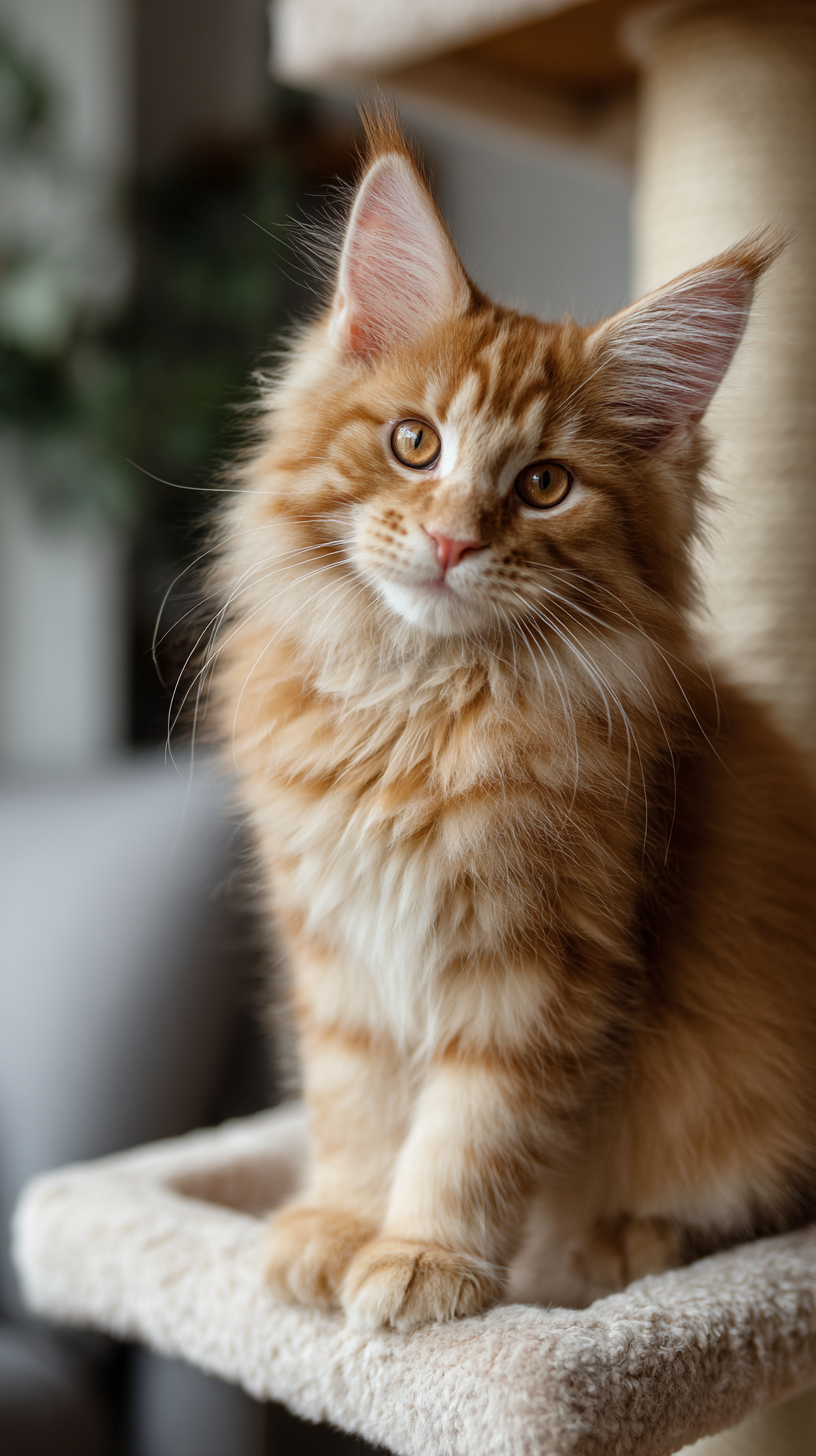
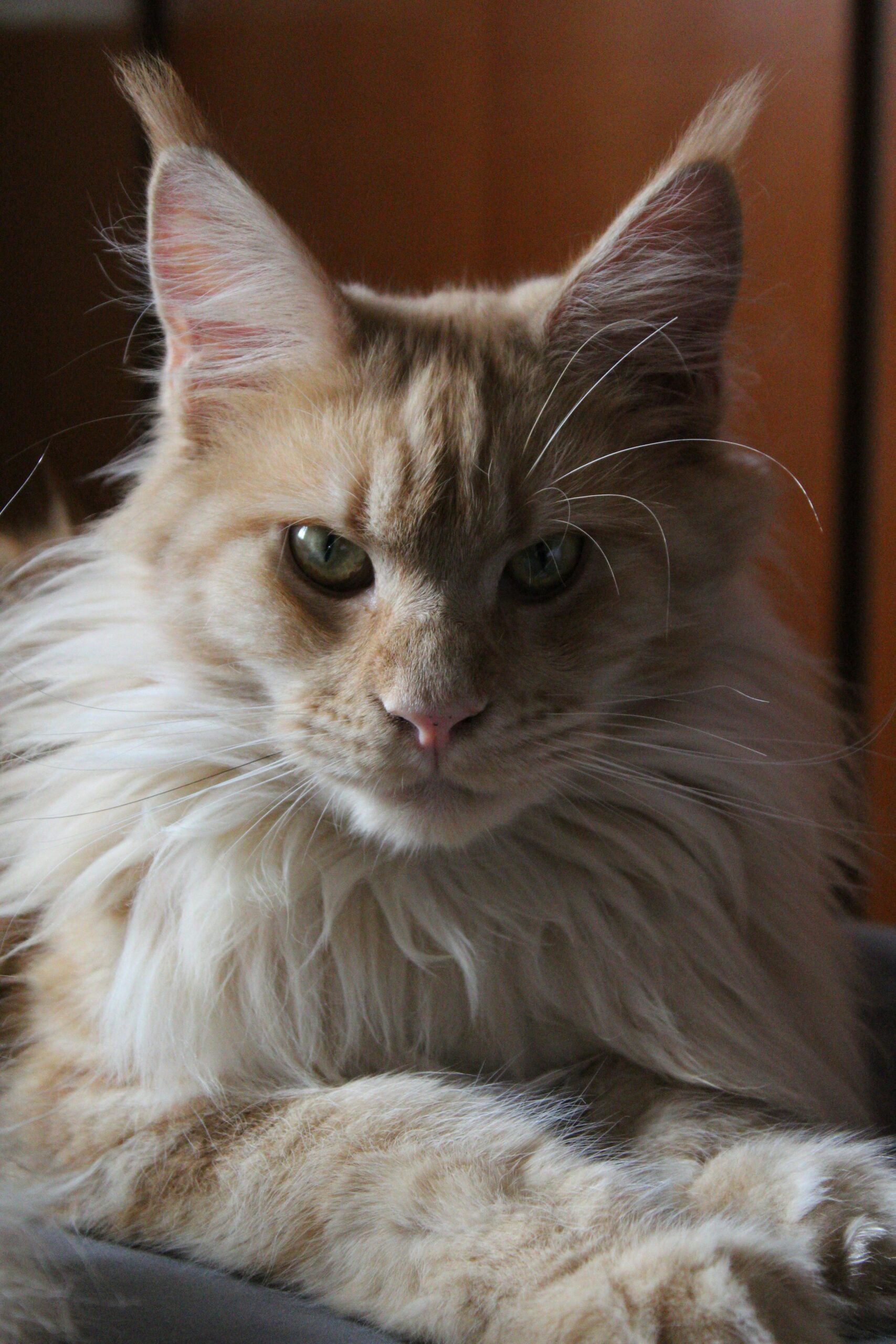
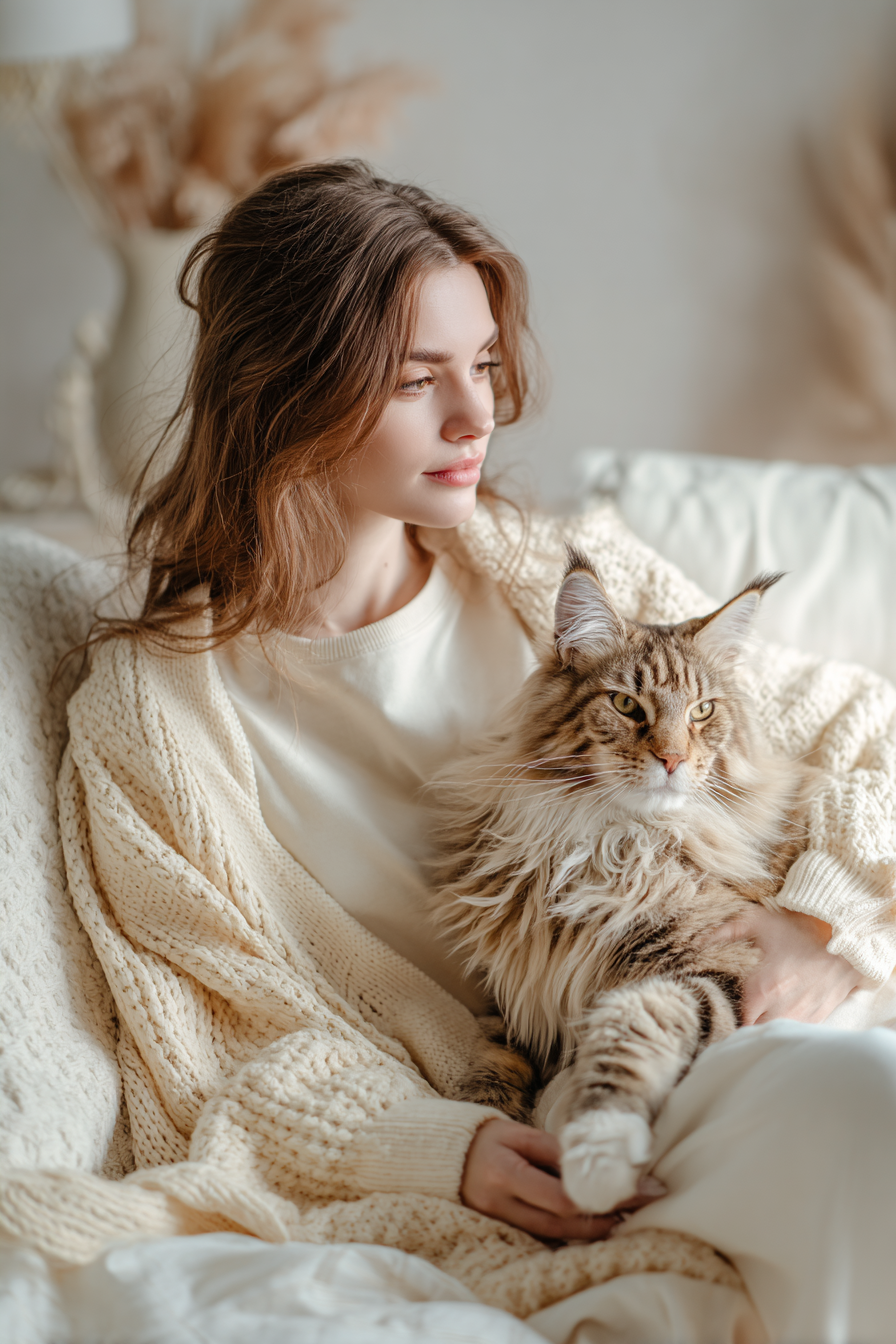
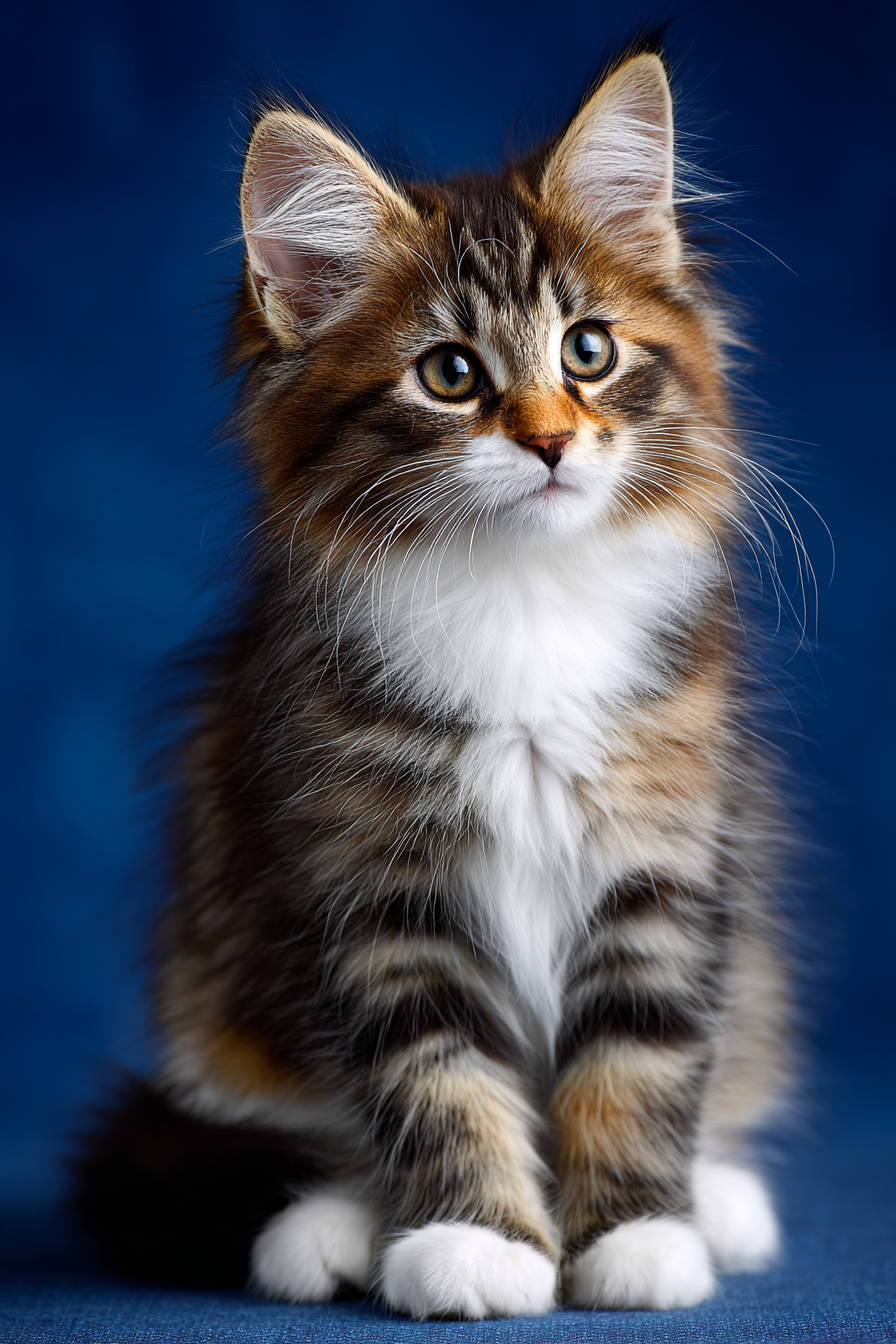
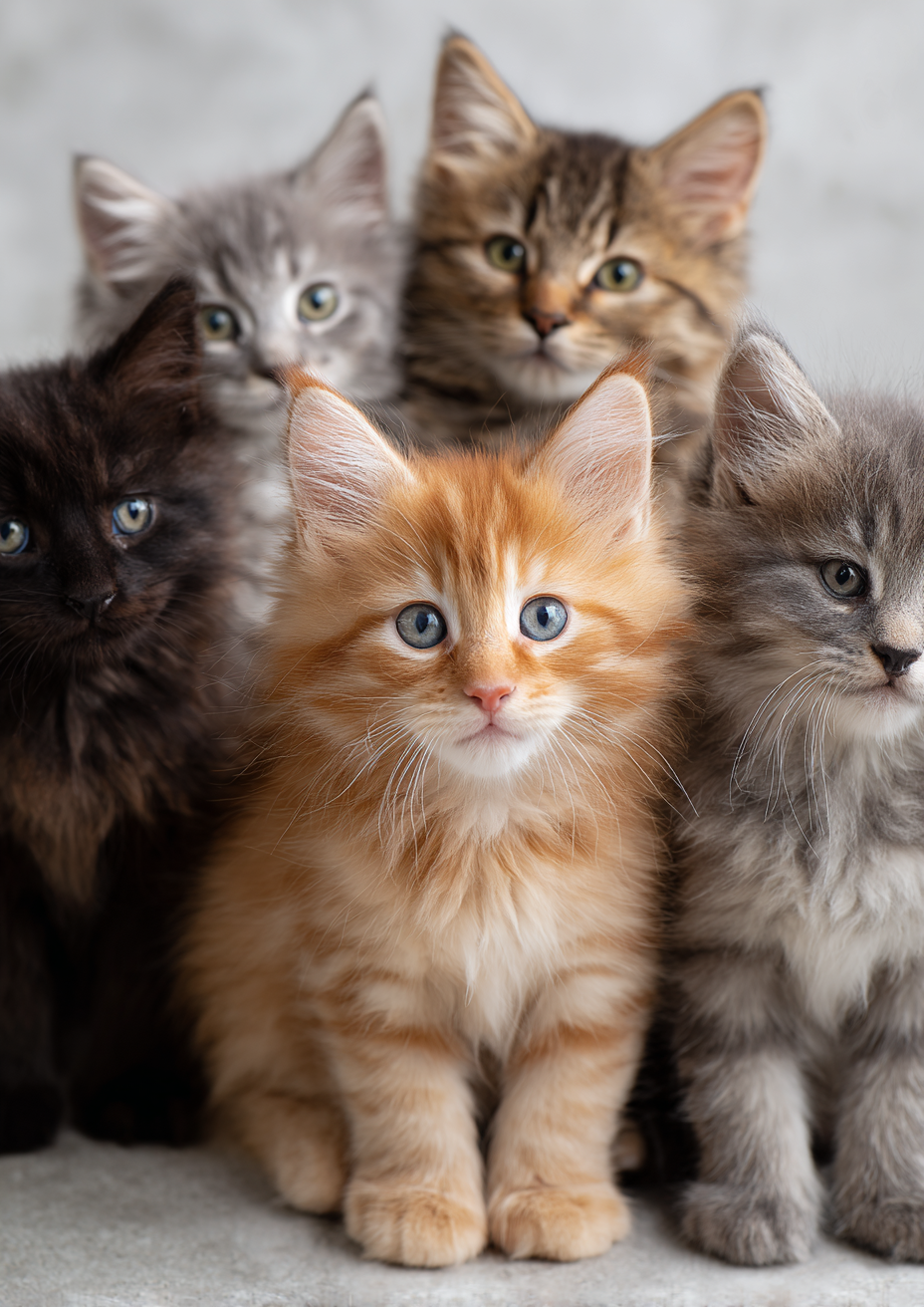
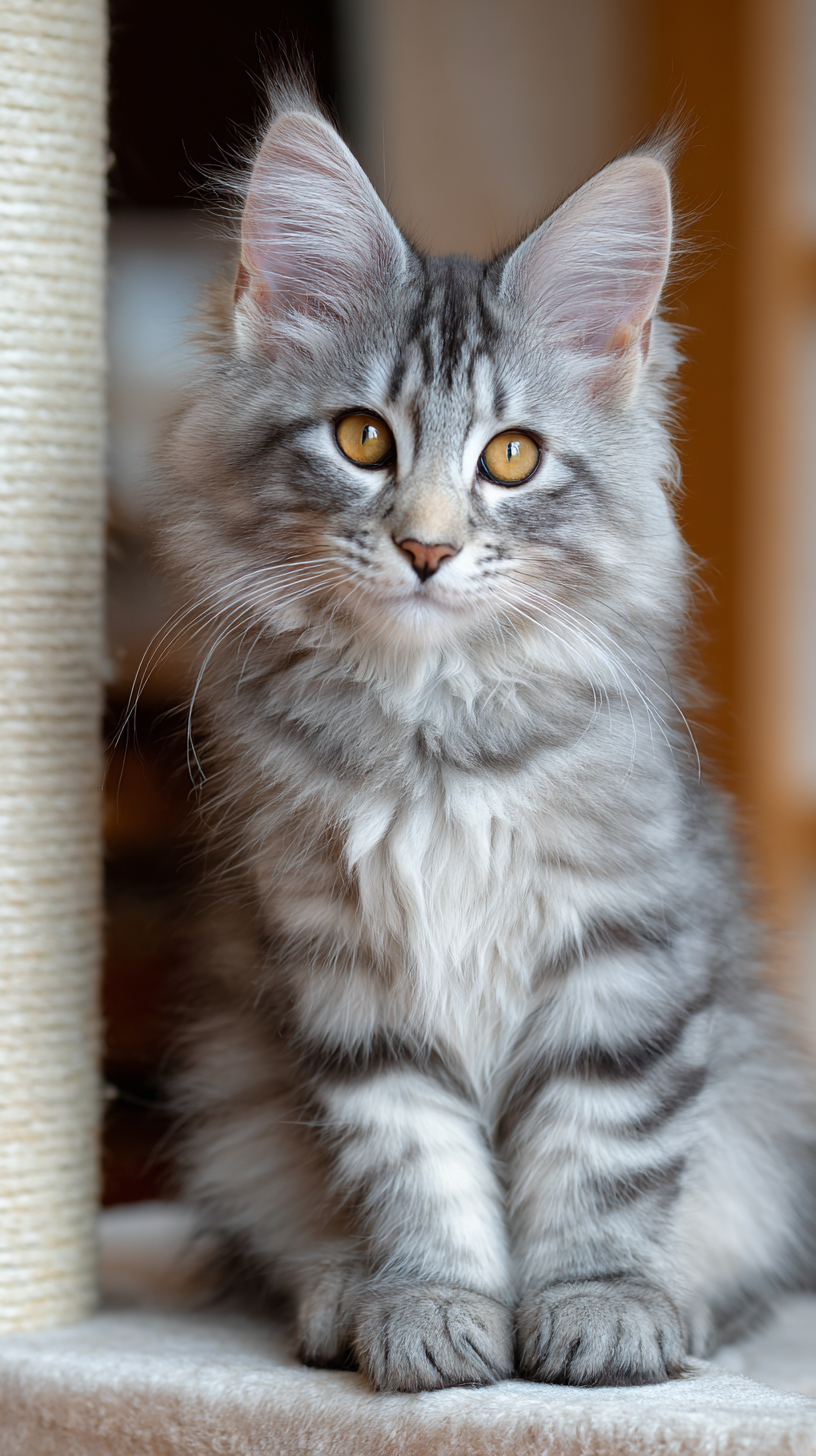
Read the Comments +